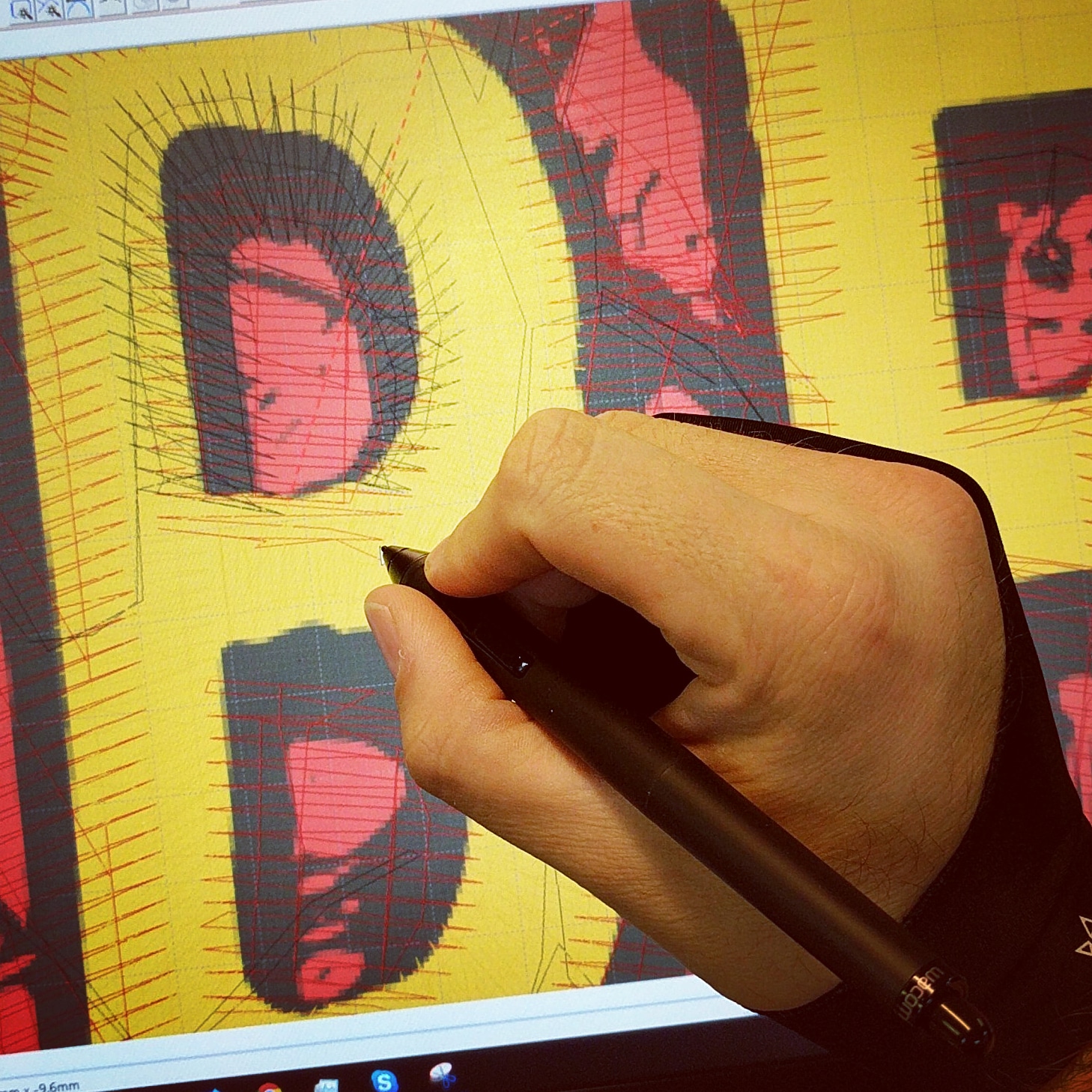Mastering the Needlework Digitizing Refine: Your Ultimate Overview
Needlework digitizing is a thorough craft that calls for accuracy and proficiency to translate elaborate styles into digital formats for equipment needlework. As craftsmens begin on this trip to grasp the embroidery digitizing process, a comprehensive understanding of the basics sets the foundation for quality.

Recognizing Needlework Digitizing Essentials
Needlework digitizing essentials create the structure whereupon elaborate styles are translated into machine-readable layouts for precise stitching. This initial action in the needlework digitizing procedure is critical for guaranteeing that the final embroidered product is a faithful depiction of the original style. Comprehending embroidery digitizing basics entails realizing vital ideas such as stitch types, sew instructions, thickness, rug, and pull payment.
Sew kinds play a vital function in identifying the visual and textural outcome of the stitched style. By selecting the appropriate stitch kind, whether it be satin, fill, or running stitch, digitizers can accomplish the desired impact and enhance the total high quality of the embroidery. In addition, stitch direction affects the flow and measurement of the style, while thickness figures out the spacing and protection of the stitches.
Furthermore, rug stitching supplies stability to the layout by protecting the fabric and stopping distortion during the needlework process. Pull compensation is one more important factor to consider to counteract the all-natural tendency of material to contract when sewn. Understanding these embroidery digitizing essentials is essential for producing professional-quality embroidered items.
Choosing the Right Digitizing Software Application
Selecting the proper digitizing software is a vital decision that considerably impacts the effectiveness and high quality of the embroidery digitizing procedure. Digitizing for Embroidery. When choosing the right digitizing software, it is important to take into consideration aspects such as the complexity of layouts you prepare to create, the user-friendliness of the software program, the level of client assistance used, and the compatibility with your embroidery equipment
There are numerous digitizing software application options available out there, varying from basic programs for beginners to sophisticated software application for expert digitizers. Some prominent choices include Wilcom EmbroideryStudio, Hatch Embroidery Software Program, and PulseID. These software program plans use a variety of tools and functions to help you create detailed layouts with convenience.
Before choosing, it is advisable to explore the various software application options through cost-free tests or demonstrations to determine which Visit This Link one ideal fits your requirements. Additionally, reviewing evaluations and seeking referrals from knowledgeable digitizers can offer valuable understandings into the toughness and weak points of each software plan (Digitizing for Embroidery). By very carefully assessing your needs and comparing the features of various digitizing software, you can make an enlightened selection that improves your needlework digitizing process
Digitizing Devices and Methods

Optimizing Layout Settings for Needlework
Mastering the details of design setups is basic in accomplishing optimum results in the embroidery digitizing procedure, building upon the foundation laid by recognizing digitizing tools and strategies. When optimizing style setups for embroidery, try this site it is necessary to take into consideration elements such as stitch kind, thickness, underlay, pull settlement, and enrollment. Registration settings line up various elements of the style precisely, keeping overall style stability.

Troubleshooting Common Digitizing Issues
When encountering typical digitizing concerns during the embroidery procedure, it is important to recognize the origin and implement efficient remedies promptly. One typical trouble is stitch thickness issues, where stitches may be also dense, causing the material to pucker, or as well sporadic, resulting in gaps in the style. Adjusting the stitch thickness settings in the digitizing software program can aid settle this concern.
Another constant obstacle is string breaks during the needlework process. This can take place as a result of various reasons such as incorrect tension settings, dull needles, or utilizing low-quality thread. Making sure appropriate upkeep of the needlework machine, including normal needle changes and tension changes, can decrease the event of thread breaks.
Furthermore, style registration errors can cause misaligned components within the needlework layout. Examining the layout positioning in the digitizing software application and making needed modifications before sewing can aid in preventing this browse around these guys concern. By addressing these typical digitizing concerns immediately and properly, you can make sure a smoother needlework procedure and premium completed products.
Verdict
In verdict, understanding the embroidery digitizing process requires a strong understanding of the fundamentals, the appropriate selection of software, and expertise of tools and techniques. Maximizing layout setups and fixing common digitizing problems are important steps in making sure top notch needlework results. By complying with these actions carefully, one can accomplish precision and performance in the digitizing procedure.
Comments on “Ideal Digitizing for Embroidery: Boost Your Tasks”